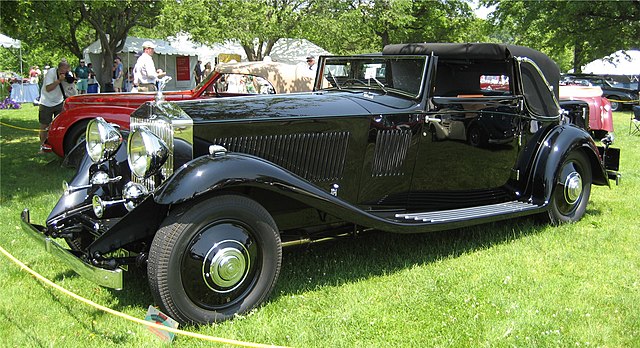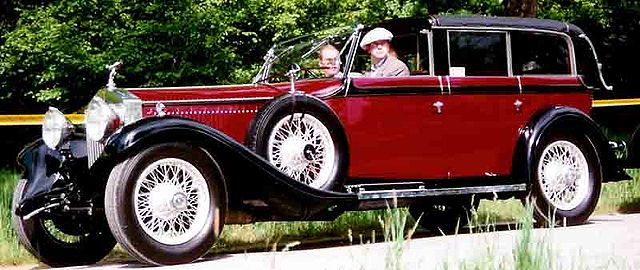
The Rolls-Royce Phantom II stands as a paragon of luxury and engineering prowess in the automotive world. Produced between 1929 and 1935, this model followed the celebrated Phantom I, boasting numerous enhancements in performance and design.
The Phantom II not only cemented Rolls-Royce’s reputation as a manufacturer of opulent vehicles but also marked a significant step forward in the evolution of luxury cars. This article explores the history, design, performance, notable models, and legacy of the Rolls-Royce Phantom II.
Introduction to the Phantom II

History and Development
The Rolls-Royce Phantom II was introduced in 1929 as the successor to the Phantom I, a vehicle that had already set high standards in luxury automotive engineering. The development of the Phantom II was aimed at addressing the shortcomings of its predecessor, particularly in terms of handling and performance.
This new model was unveiled at a time when Rolls-Royce was looking to solidify its status in the ultra-luxury car market, competing with other high-end manufacturers like Bentley and Hispano-Suiza.
Technical Innovations
Significant technical advancements were introduced in the Phantom II, starting with its refined chassis design. The frame was constructed to lower the car’s profile, enhancing stability and driving comfort.
The implementation of a new pushrod overhead-valve inline-six engine, which was capable of producing more power while maintaining smooth operation, was another critical update. These innovations made the Phantom II one of the most advanced cars of its era.
Production and Variants
During its production run from 1929 to 1935, Rolls-Royce manufactured 1,680 units of the Phantom II. The model was available in two main variants: the Continental and the standard chassis. The Continental was designed for high-speed touring and had a shorter wheelbase and a sportier tune, making it particularly popular among affluent buyers who valued performance along with luxury.
Design and Aesthetics

Body Styling
The Phantom II continued Rolls-Royce’s tradition of offering custom coachbuilt bodies, crafted by renowned coachbuilders such as Barker, Park Ward, and Thrupp & Maberly. This bespoke approach allowed each Phantom II to be unique, tailored to the individual tastes and requirements of its owner.
The car’s large and imposing frame was complemented by elegant lines and luxurious detailing, making it a symbol of status and sophistication.
Interior Luxury
Inside, the Phantom II was the epitome of opulence. The interiors were lavishly appointed with the finest materials, including rich leather, polished wood, and wool carpets. Attention to detail was meticulous, with every fixture and fitting designed to offer peak luxury and comfort.
The spacious interior provided ample room for passengers to travel in style, surrounded by conveniences that were cutting-edge at the time.
Technological Features
Despite its vintage, the Phantom II was equipped with several advanced features for its day, such as centralized lubrication systems and adjustable shock absorbers. These not only enhanced the vehicle’s performance but also its reliability and ease of maintenance, qualities that were crucial for vehicles in the luxury segment.
Performance and Handling

Engine and Powertrain
The heart of the Phantom II was its 7.7-liter inline-six engine, which delivered remarkable smoothness and power. This engine was linked to a four-speed manual transmission, providing the driver with ample control over the vehicle’s considerable power. The top speed of the Phantom II could reach up to 100 mph, an impressive feat for such a large and luxurious vehicle at the time.
Ride Quality
The focus on lower chassis design and improved suspension systems resulted in a significantly better ride quality compared to its predecessor. The Phantom II offered a smoother and more stable ride, even at high speeds or over rough surfaces. This made it particularly suited for long-distance travel, where comfort was paramount.
Handling Improvements
Handling was another area where the Phantom II saw significant improvements. The revised chassis and suspension setup provided better balance and more precise steering response, reducing body roll and enhancing overall agility. This made the Phantom II not only a luxurious vehicle but also a joy to drive, appealing to those who valued driver engagement alongside comfort.
Notable Models and Owners

Famous Variants
Among the Phantom II’s lineup, the Continental series stood out for its sportier configuration. Designed for enthusiasts and long-distance touring, it featured a higher compression ratio, stiffer suspension, and a lower stance. These cars are highly prized by collectors today due to their rarity and performance-oriented build.
Celebrity Ownership
The Rolls-Royce Phantom II was a favorite among the elite of its time, owned by royalty, celebrities, and business magnates. Its association with high-profile individuals helped to enhance its image as a vehicle of prestige and exclusivity. The Phantom II was more than just a mode of transport; it was a statement of wealth and status.
Custom Requests
Customization was a key aspect of the Phantom II’s appeal. Wealthy clients often requested unique features, from bespoke luggage sets to specialized interior configurations, making each Phantom II a personalized masterpiece. This level of customization allowed Rolls-Royce to cater to the most discerning tastes, further solidifying its position in the luxury car market.
Legacy and Influence

Influence on Later Models
The Phantom II’s innovations in engineering and design set new standards in the luxury automotive industry, influencing subsequent models from Rolls-Royce and other car manufacturers. Its emphasis on performance, comfort, and bespoke luxury continued to be integral to the Rolls-Royce brand identity in later years, influencing the development of future models like the Phantom III and beyond.
Collector’s Item
Today, the Rolls-Royce Phantom II is a highly coveted collector’s item, celebrated for its historical significance and classic beauty. Its rarity and the bespoke nature of each vehicle make it a highlight of any classic car collection. The model’s enduring appeal is a testament to its quality and the timeless allure of Rolls-Royce vehicles.
Enduring Legacy
The Phantom II remains a symbol of automotive excellence and luxury. Its lasting impact on the car industry and its status as a collector’s dream underline the enduring legacy of Rolls-Royce as a purveyor of fine automobiles. The Phantom II is not just a relic of its time but a beacon of timeless elegance and engineering brilliance.
In conclusion, the Rolls-Royce Phantom II is more than just an automobile; it is a piece of automotive history that exemplifies the zenith of early 20th-century luxury car manufacturing. Its blend of performance, customization, and luxurious detail holds a special place in the pantheon of classic cars.
